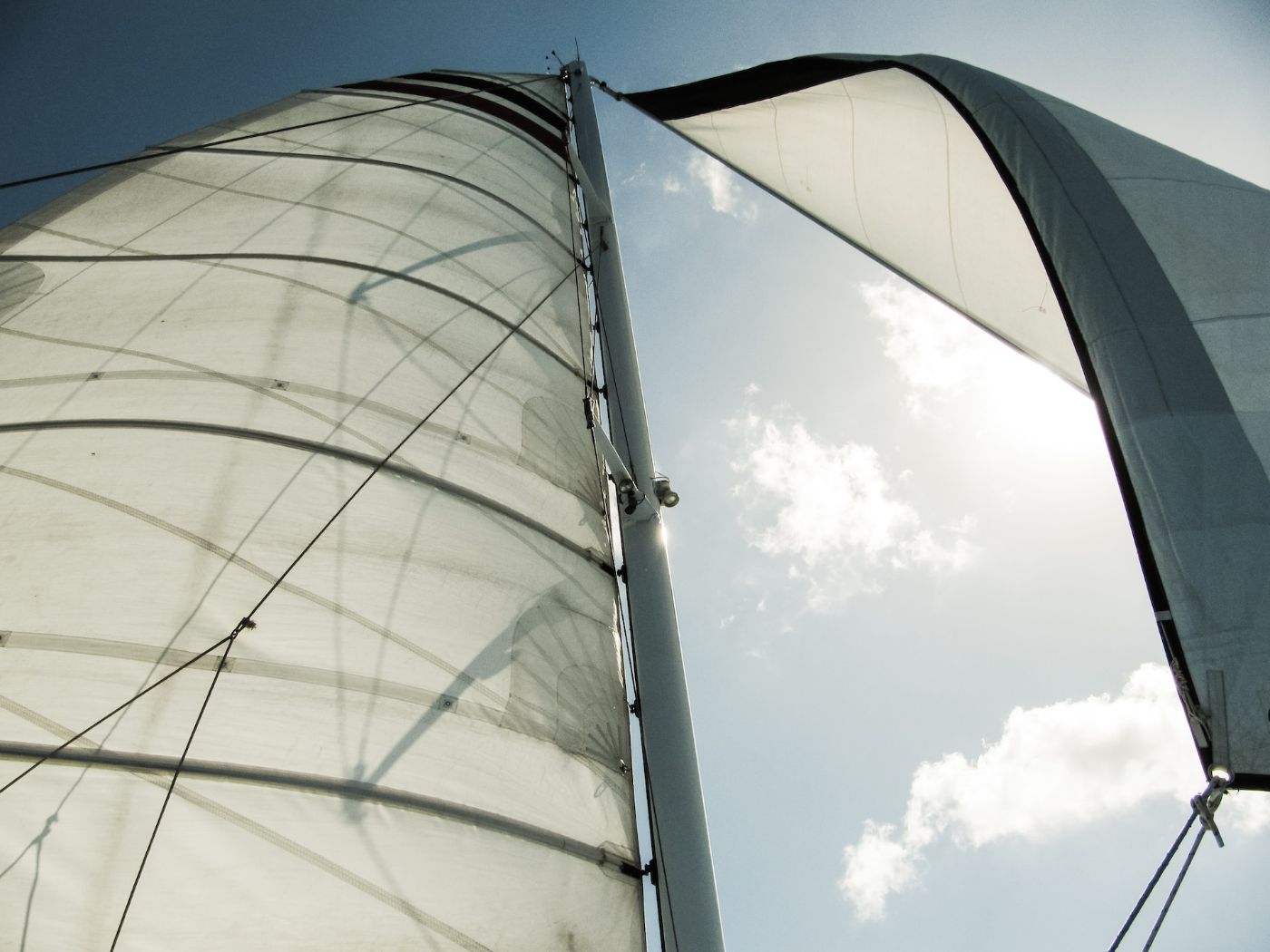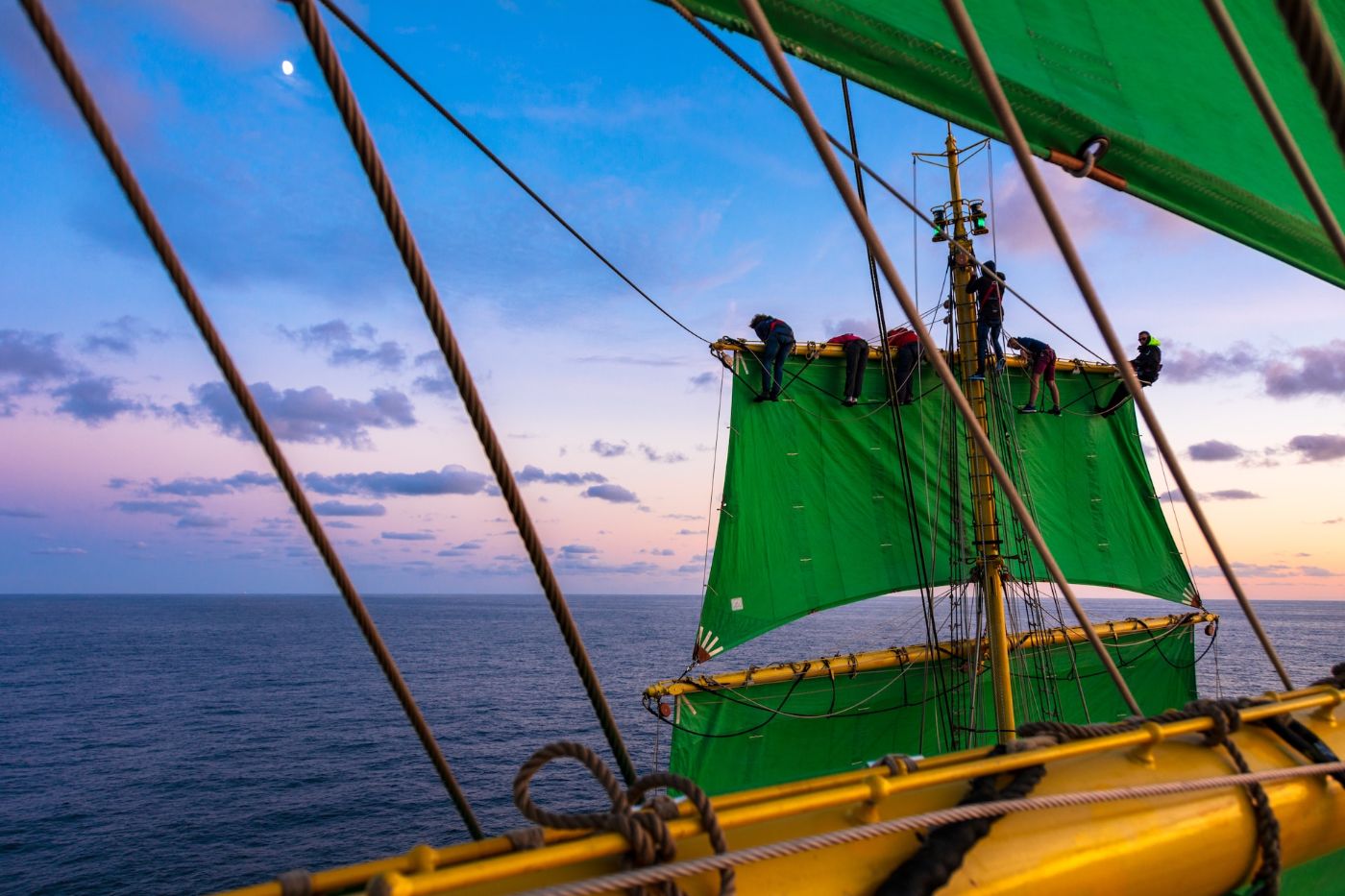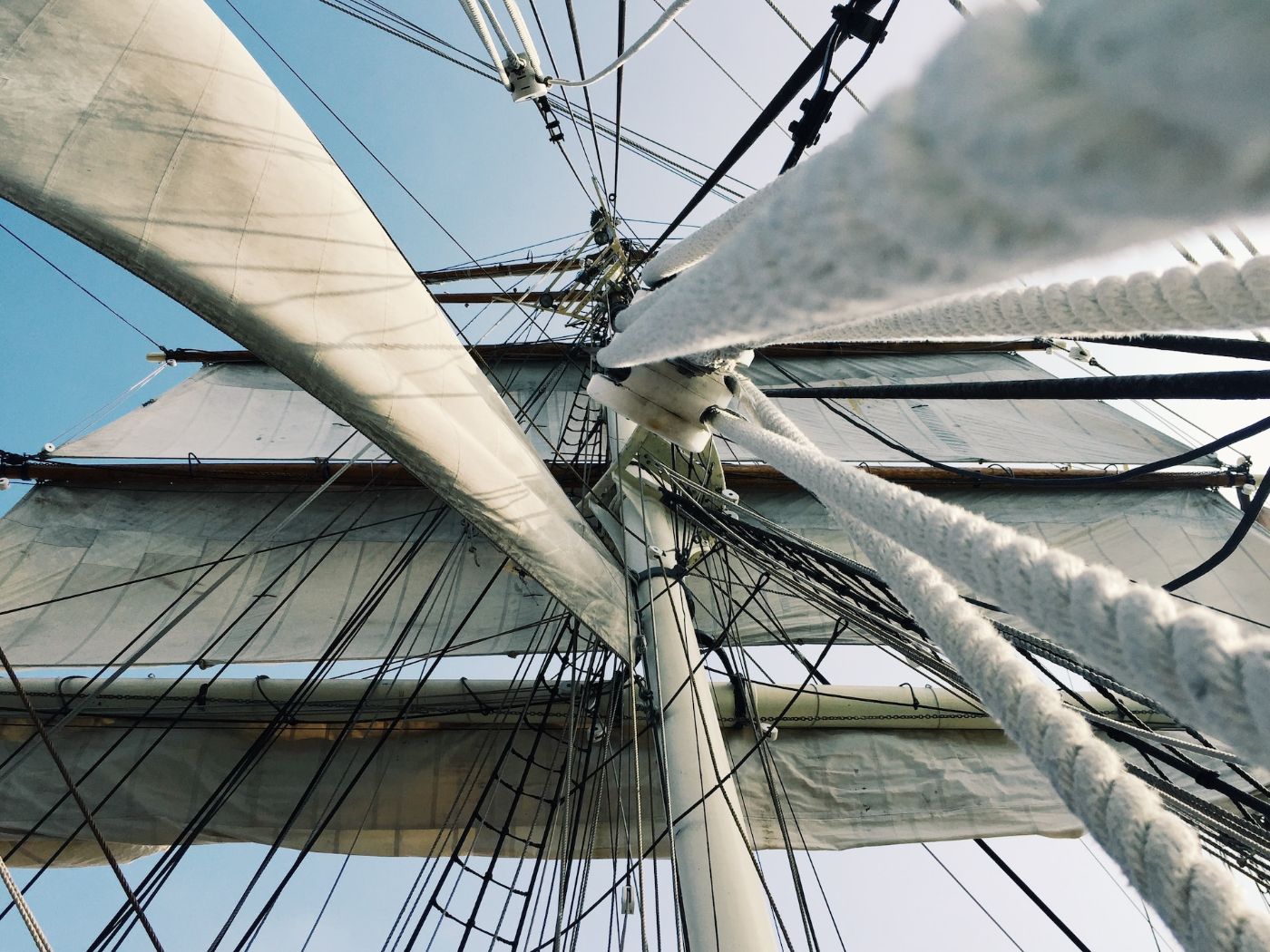The Pros and Cons of Dyneema vs Stainless Rigging
For centuries, stainless steel rigging has been a tried-and-true option because of its strength and durability. However, recently, a newer option has been gaining popularity: Dyneema rigging, which is also strong and durable and does not corrode easily. If you're looking at which option is best for your boat, let me help you explore the pros and cons of each one.
In terms of strength, Dyneema is stronger than stainless steel, yet it is more lightweight, which can make a big difference in performance. In terms of durability, stainless steel is more resistant to damage from UV rays, abrasion, and heat. However, stainless steel is much heavier and more costly in the long run.
Dyneema is a synthetic fiber that is made from ultra-high molecular weight polyethylene (UHMWPE), while stainless steel rigging is made up of steel wire rope or cable. Let's explore what other components of Dyneema and stainless steel rigging make them unique.
Summary
- Stainless steel rigging has nylon or polyester as a protective covering against abrasion and UV damage.
- If you're dealing with high loads or compression, stainless steel rigging is the best option.
- Dyneema is more eco-friendly, whereas stainless steel is a non-renewable resource that requires significant energy to produce and recycle.
- Dyneema rigging can fail due to wear, abrasion, and UV degradation, while stainless steel rigging can fail due to fatigue.
- Chafe guards, such as leather, nylon, or spectra, are protective sleeves that slide over your rigging to prevent it from rubbing against other surfaces.

The Pros and Cons of Dyneema vs Stainless Rigging
Below is a table comparing the pros and cons of both Dyneema and stainless steel:
| Pros of Dyneema rigging | Cons of Dyneema rigging |
|---|---|
| High strength-to-weight ratio | Susceptible to UV damage |
| Low stretch | Requires frequent inspection and replacement |
| Easy to handle and install | More expensive than stainless steel |
| Pros of stainless steel rigging | Cons of stainless steel rigging |
|---|---|
| Durable and long-lasting | Heavy and bulky |
| Resistant to corrosion and UV damage | High stretch |
| Less expensive than Dyneema in the short-term | Difficult to install and maintain |
Dyneema rigging has a high strength-to-weight ratio, meaning that it is very strong but also lightweight. It also has low stretch, which means that it maintains its shape and tension well. Additionally, it is easy to handle and install.
However, it is susceptible to UV damage, which can weaken the material over time. It also requires frequent inspection and replacement, which can be costly. It also tends to be more expensive than stainless steel.

Now, on the other hand, stainless steel rigging is durable and long-lasting, so, it can withstand harsh environments and maintain its strength over time. It is also resistant to corrosion and UV damage, which means that it can be used in a variety of settings. It's also less expensive than Dyneema in the short term.
However, the main disadvantage of stainless steel rigging is that it is heavy and bulky, which can make it difficult to handle and install. It also has a high stretch, which means that it may not maintain its shape and tension as well as Dyneema rigging. Since it is difficult to install and maintain, it can be time-consuming and costly.
Detailed Comparison Between Dyneema And Stainless Rigging
Below is a more detailed look at the differences between Dyneema and stainless steel rigging:
They have a different material composition
In this section, we'll explore the components of Dyneema and stainless steel rigging:
| Component | Dyneema | Stainless Steel |
|---|---|---|
| Main component | HMPE fibers | Steel wire rope |
| Secondary fibers | Aramid fibers, Spectra fibers | Stainless steel wire |
| Specialty fiber | DM20 | Polybenzoxazole (PBO) cable |
| Protective covering | None | Nylon or polyester |
Components of Dyneema
Dyneema is a synthetic fiber that is made from ultra-high molecular weight polyethylene (UHMWPE). It is often used in rigging because of its strength and durability. This rigging is made up of a few different components, including:
- HMPE (High Modulus Polyethylene) fibers: These fibers are the main component of Dyneema rigging. They are incredibly strong and have a high strength-to-weight ratio, making them ideal for rigging applications.
- Aramid fibers: These fibers are often blended with HMPE fibers to improve abrasion resistance and UV stability.
- Spectra fibers: These fibers are similar to HMPE fibers and are often used in combination with them to create a stronger rigging system.
- DM20: This is a type of Dyneema fiber that is specifically designed for rigging applications. It has a low creep rate and high strength, making it ideal for standing rigging.

Components of stainless steel
Stainless steel rigging is made up of steel wire rope or cable. This wire is made up of several components, including:
- Steel wire rope: This is the main component of stainless steel rigging. It is made up of several strands of wire that are twisted together to form a rope. The cost of replacing a stainless wire rope varies depending on the diameter.
- Stainless steel wire: This wire is used to make the individual strands that make up the wire rope. It is made from a high-quality stainless steel alloy that is resistant to corrosion and rust.
- Polybenzoxazole (PBO) cable: This is a type of cable that is sometimes used in place of stainless steel wire rope. It is made from a synthetic fiber that is stronger than steel and has a higher modulus of elasticity.
- Nylon or polyester: These materials are sometimes used as a protective covering for stainless steel rigging. They provide additional protection against abrasion and UV damage.
Dyneema handles load better but stainless steel can handle high compression
| Load handling and compression | Dyneema | Stainless steel |
|---|---|---|
| Load handling | Low stretch, lightweight | Higher stretch, heavier |
| Compression handling | May not handle high compression | Can handle high compression |
Dyneema has a much lower stretch than steel, which means that it will maintain its shape and tension better over time. This can be especially advantageous for sailors who are looking for consistent performance and handling from their rigging.
Dyneema rigging is also much lighter than steel, which can be a significant advantage when it comes to load handling. With less weight to deal with, you'll be able to maneuver your sails and boat more easily, which can be especially important in high-wind conditions.
However, Dyneema rigging may not always be the best choice for all load-handling scenarios. While it is incredibly strong and durable, it may not be able to handle the same level of compression as steel rigging. This means that if you're dealing with high loads or compression, you may need to opt for steel rigging instead.
Dyneema rigging can help you save money in the long run
While Dyneema rigging is generally more expensive upfront, it may save you money in the long run due to its durability and low maintenance requirements. On the other hand, stainless steel rigging is typically less expensive upfront but may require more maintenance and replacement over time.
Here are some cost considerations to keep in mind when choosing between the two:
| Cost consideration | Dyneema | Stainless steel |
|---|---|---|
| Initial cost | Generally more expensive | Generally less expensive |
| Maintenance costs | Little to no maintenance required | Regular inspections, cleaning, and replacement of worn or corroded parts |
| Replacement costs | More durable and long-lasting, may require occasional adjustment | May require more frequent replacement due to wear and corrosion |
| Overall cost | May save money in the long run | May require more maintenance and replacement over time |
Dyneema is more resistant to chafe and abrasion
Dyneema is made of Ultra-High Molecular Weight Polyethylene (UHMWPE) fiber, which is incredibly strong and durable. It is highly resistant to abrasion and can withstand repeated rubbing against rough surfaces without breaking down.
In contrast, stainless steel rigging is susceptible to chafe and abrasion, which can cause it to fail unexpectedly. Stainless steel wire is also prone to corrosion, which can weaken the rigging over time. If you sail in areas with lots of debris or rough conditions, Dyneema rigging may be a better choice for you.
To further protect your Dyneema rigging, you can use chafe guards. Chafe guards are protective sleeves that slide over your rigging to prevent it from rubbing against other surfaces. They can be made of a variety of materials, including leather, nylon, and Spectra. Chafe guards can extend the life of your rigging and help prevent unexpected failures.
They require different types of splicing and hardware
Both Dyneema and stainless steel rigging require different types of splicing and hardware. Here are some things to keep in mind:
Dyneema requires a different type of splicing than stainless steel
The most common type of splicing for Dyneema is the eye splice, which creates a loop at the end of the line. This splice is strong and reliable, and it is easy to inspect for wear and tear.
Another type of splice that can be used with Dyneema is the soft shackle. Soft shackles are a great alternative to metal shackles because they are lightweight and easy to handle. They are also less likely to damage your boat's deck or rigging.
Stainless steel rigging requires a different type of hardware than Dyneema
The most common types of hardware used with stainless steel rigging are terminals, thimbles, shackles, turnbuckles, chainplates, and wages.

Terminals are fittings that are used to attach the rigging to the mast or other parts of the boat. Thimbles are used to protect the rigging from wear and tear, and they help to distribute the load evenly. Shackles are used to connect the rigging to other parts of the boat, and turnbuckles are used to adjust the tension in the rigging.
Chainplates are used to attach the rigging to the boat's hull. Swages are fittings that are used to attach the rigging to the terminals. Mechanical fittings, such as those made by Hayn or Suncor, are becoming more popular because they are easy to install and require no special tools.
They can both fail but they do so in different ways
Dyneema rigging can fail due to wear, abrasion, and UV degradation. Over time, the fibers can become weakened and frayed, which can lead to breakage. However, Dyneema rigging is designed to be inspected regularly, and any signs of wear can be spotted and addressed before they become a problem.
Stainless steel rigging, on the other hand, can fail due to fatigue. Over time, the repeated stresses placed on the rigging can cause small cracks to form, which can eventually lead to a catastrophic failure. However, stainless steel rigging is also designed to be inspected regularly, and any signs of fatigue can be spotted and addressed before they become a problem.
In terms of wear, Dyneema rigging is much less susceptible to wear and abrasion than stainless steel, which means that it will last longer and require less maintenance. However, Dyneema is more susceptible to UV degradation, you'll need to protect it from the sun when possible.
In terms of fatigue, stainless steel rigging is much more resistant to fatigue than Dyneema, which means that it will last longer and require less maintenance. However, stainless steel is more susceptible to corrosion, so you will need to protect it from saltwater and other corrosive elements.
Dyneema is more resistant to UV and more environmentally friendly
Stainless steel rigging is generally more resistant to UV radiation than Dyneema rigging. However, prolonged exposure to UV radiation can cause stainless steel rigging to corrode, which can weaken the rigging and make it more prone to failure.
On the other hand, Dyneema rigging is made from ultra-high molecular weight polyethylene fibers, which are highly resistant to UV radiation. This means that Dyneema rigging can last longer than stainless steel rigging in areas with high levels of UV radiation. However, Dyneema rigging is not completely immune to UV radiation, and prolonged exposure can cause the fibers to break down over time.
In terms of environmental impact, Dyneema rigging is generally considered to be more eco-friendly than stainless steel rigging. This is because Dyneema is a synthetic material that can be recycled, whereas stainless steel is a non-renewable resource that requires significant energy to produce and recycle.
They require specific rigging components
Dyneema rope is typically lighter and more flexible than stainless steel wire rope, which can be an advantage when it comes to reducing weight aloft and improving performance.

However, Dyneema rope may not be as durable as stainless steel wire rope and may require more frequent inspections and replacements. Stainless steel wire rope is generally more durable and long-lasting than Dyneema rope, but it is also heavier and less flexible.
When it comes to thimbles, cheeky tangs and colligo marine thimbles are popular options for synthetic rigging, while swage fittings and tangs are popular options for wire rigging. Jordan series drogue and topping lift are some other components that you may need to consider when rigging your boat.
For more information on rigging components, you may check out this article.
Did you find the answer to your specific question?
👍 0 👎 3




Leave a comment